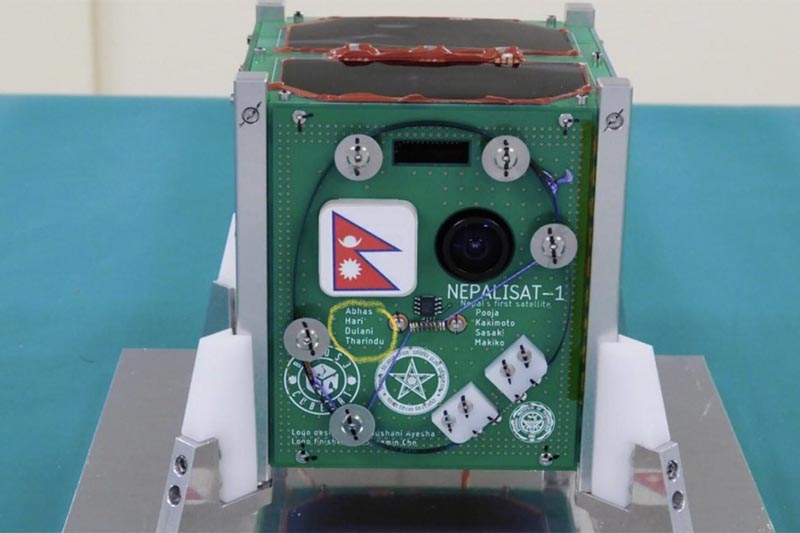Nepal’s first satellite starts revolving around Earth
Kathmandu, June 18
Nepal’s first satellite, NepaliSat-1 started revolving around the Earth’s orbit after it was successfully deployed from the International Space Station into space at 4:00pm
yesterday.
But the country has to turn to its eastern neighbour, Bhutan to receive signals sent by the satellite as Nepal Academy of Science and Technology (NAST) failed to build a ground station it had promised three monthsbefore the satellite was scheduled to be launched.
NepaliSat-1 needs seven to 10 days to become fully functional. Until then its condition has to be timely checked each time the satellite passes the country. Since Nepal does not have its own ground station to carry out checks, officials at NAST are asking officials at the Ministry of Communications in Bhutan to send information about the satellite.
Scientists need to study four kinds of information regarding the satellite before it starts taking photographs. The ground station has to record whether or not the position of the satellite is accurately placed; whether the strength of the signal it is sending is strong enough; whether the temperature of the satellite is ideal and whether the battery is working properly.
All information of the satellite can be known immediately once it is launched into space.
NAST officials said they observed the condition of the satellite last evening, after officials of Bhutan-based ground station sent them screen shots of the information they received. The satellite revolves around the earth every 90 minutes and it passes over Nepal two to four times a day allowing around six minutes’ time to record information.
Roshan Pandey, acting chief of Faculty of Technology at NAST said, “We have requested Bhutanese officials to track the condition of our satellite and provide us information through e-mails. They are supporting us.”
Prime Minister KP Sharma Oli had said after the satellite was launched on April 17 that Nepal had transited into the space-era, but in stark contrast, NAST, the apex body for promoting science and technology in the country has not been able to establish a ground station.
Rabindra Dhakal, chief of Faculty of Technology at NAST had, on multiple occasions said that they were confident about operating the ground station before NepaliSat-1 was deployed into space.
NAST had handed over responsibilities to Decade International Pvt Ltd to build the ground station. The deadline provided for the contractor will ended on June 22. Although NAST officials have reiterated confidence about building the ground station within the deadline, it cannot be believed so easily given their past record.
“We have now almost completed the construction, and we are confident that our own ground station will receive the first pictures taken by NepaliSat-1,” Dhakal said.
NAST had scheduled a live telecast of the satellite being released into the Earth’s orbit from its auditorium. Japan Aerospace Exploration Agency (JAXA), had facilitated the live telecast of the deployment.
Despite the live broadcast here in the country, Minister of Education, Science and Technology Giriraj Mani Pokhrel and Sunil Babu Shrestha vice-chancellor of NAST, had travelled to Japan at JAXA to witness live deployment of the satellite.
Two Nepali scientists, Aabhas Maskey and Hariram Shrestha, who are studying in Japan’s Kyushu Institute of Technology had developed the satellite in collaboration with NAST.
The satellite will be useful for taking pictures of various geographical locations in the country.






